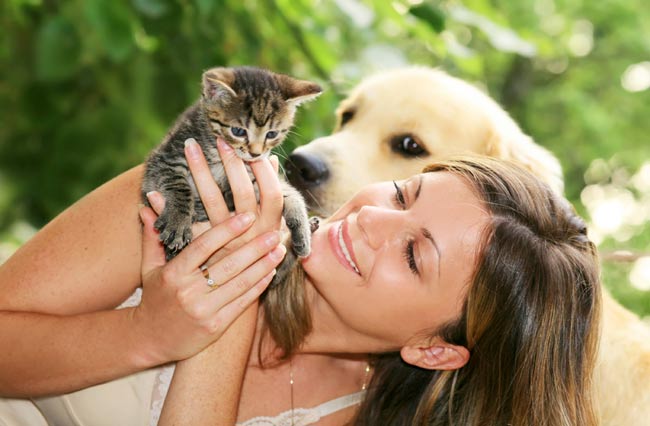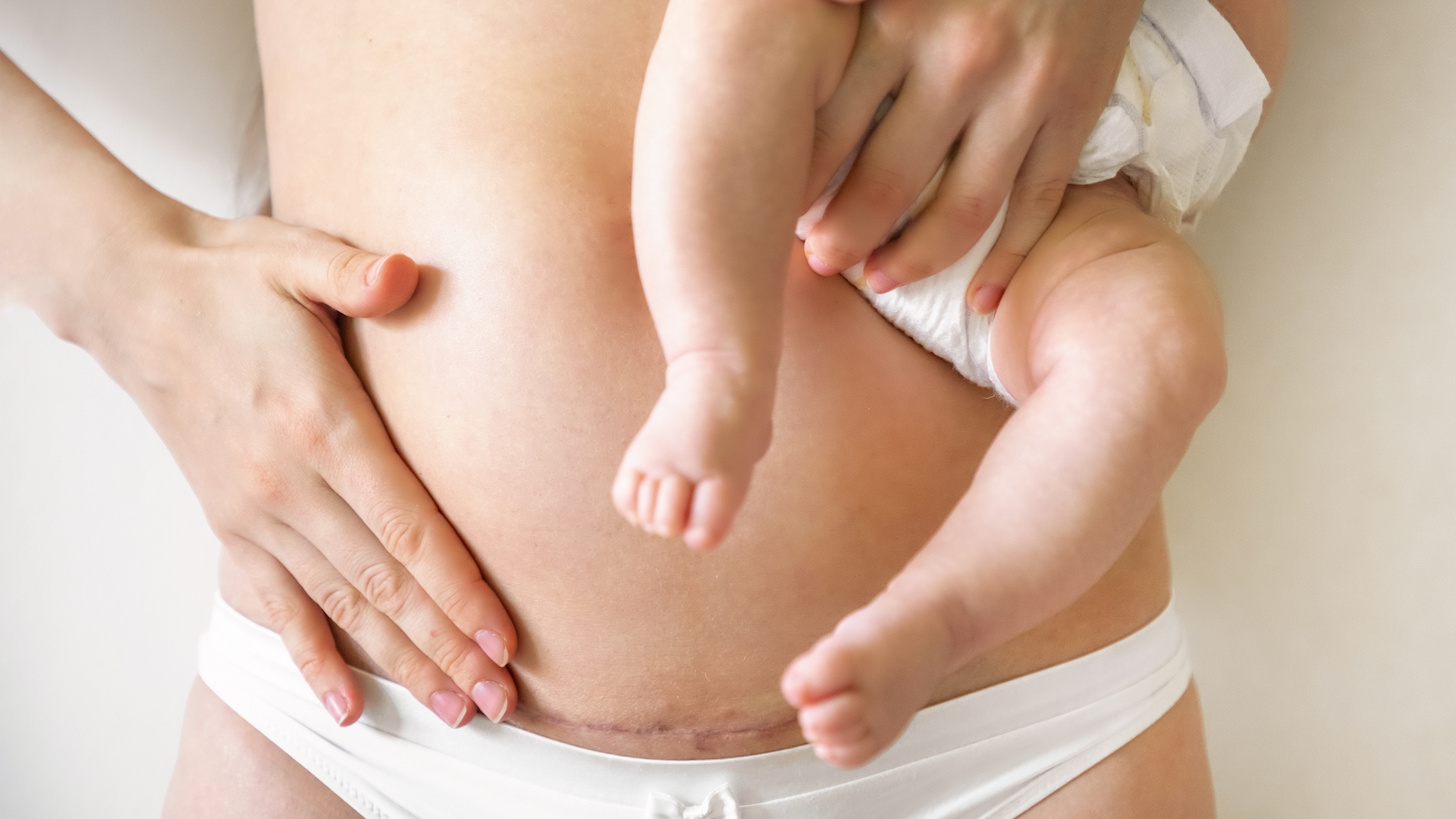Obsession with Pets at All-Time High

Whether they bark, meow, squeak, chirp or hiss, pets are treasured household members for most Americans at some point, and recent surveys show more and more people are welcoming animals into their homes and treating them as family.
Two-thirds of American households (about 71.1 million) have at least one pet, according to a survey of pet owners conducted last year by the American Pet Products Manufacturers Association. That number was an increase from the 56 percent of households that owned a pet in 1988, the first year the survey was conducted.
And 45 percent of pet owners have more than one pet, according to American Society for the Prevention of Cruelty to Animals science advisor Stephen Zawistowski.
There is now a "huge rise in the number of pets" in the United States, said Humane Society spokesperson Stephanie Shain.
These pets, especially cats and dogs, are also increasingly considered to be an essential part of a family, with U.S. pet owners spending more time and money (estimated at nearly $41 billion in 2007) on the health and happiness of their pets in recent years. Things that would once have seemed extravagant—doggy daycares, pet cemeteries, and an expanding array of pet surgeries and treatments—are now as common as, well, the family dog.
Family members
While owning a pet is almost the norm today, in eras past, it was a luxury, says Alan Beck, a veterinary professor with Purdue University's Center for the Human-Animal Bond. While farmers may have kept cats to rid their barns of mice and dogs to herd or help with hunting, keeping an animal solely as a companion was something for which only the wealthy had the free time and disposable income.
Get the world’s most fascinating discoveries delivered straight to your inbox.
But as the American middle class emerged and grew in the 20th century, all of that changed and pets, like cars and TV sets, became something that anyone could have.
"More people have discretionary time, discretionary income," Beck said. "So you don't have to be one of the upper echelon to have a pet."
Pet ownership in America really began to take off after World War II, Zawistowski said, as families not only earned more income, but began to move to the suburbs, where they had more room to keep pets.
Adding to this was the changing notion of what constituted the typical American family, which was shaped by how families were portrayed on TV and in the movies. In addition to a mom, dad and kids, these fictional families had a dog and cat, sending the message that pets were an essential part of home life.
"These all started to create the image of what the American household, or the American home, was supposed to look like" Zawistowski said.
Pets aren’t just a part of the household like the TV or computer is—they are more and more thought of as full-fledged family members. Beck said that 40 percent of people who keep pictures of their spouse and children in their wallet also keep pictures of their pets, "because it is a member of the family."
There's also the strong sense of grief many owners feel when a pet dies, plus the consoling response of family and friends.
"It's very much accepted that it's a real loss," Shain said.
Pet owners can now to keep their pet's ashes in an urn or purchase a headstone or marker in a pet cemetery, and friends and co-workers can send a condolences card from Hallmark.
"In some ways, an event is culturally relevant when Hallmark makes a card," Zawistowski said.
Societal acceptance
Pets are increasingly recognized by society as an important part of their owners' lives. This is particularly the case with dogs, as more opportunities have cropped up to make it easier to keep a canine companion.
The problem of what to do with a dog while the owner is at work now has several solutions: More businesses are allowing people to bring their dogs to work (the Humane Society just instituted such a policy), doggy daycares are springing up and people are increasingly allowed to telecommute or work from home.
Some stores and bars even allow dogs to accompany their owners inside.
"We're allowing dogs more and more into our lives in places where they absolutely didn't used to be allowed," Shain said.
Television shows on networks such as Animal Planet that focus on pets also serve to reinforce the norm of having a pet, Beck added.
Veterinary care
Additional key factors in the proliferation of pet owners are improvements in veterinary care and the development of products that make caring for all types of pets easier, particularly fish, birds and reptiles, which formerly required highly specialized knowledge for their care and feeding.
"We understand now more than ever how pets work," Shain said.
Veterinary medicine has expanded, with specialties devoted to particular animals and disease types (such as cancers). Vets have also developed a better understanding of many of the common diseases that plague pets.
"Our knowledge has grown, we know more about what it takes to do a good job of keeping our pets happy and healthy, and that has in turn led to them living longer, which has resulted in them having other needs," Zawistowski said.
Now there are options to treat diseases and ailments that 20 years ago would have necessitated putting the animal to sleep, Zawistowski said. Vets can perform more complicated surgeries, pets with broken limbs can have them mended and chemotherapy can be performed on cats with cancer or dialysis on those with kidney problems (two common feline ailments).
Because these options are available, people are now willing to spend thousands of dollars to treat their pets and keep them alive, whereas in the past they would have simply put them to sleep.
With pets living longer, owners are paying more attention to what they feed pets and issues such as dental care. For instance, dogs used to die earlier, so it didn't matter as much that their teeth started falling out around the age of 7 or 8, but now, with some dogs living upwards of 15 years, those teeth become important to a dog's long-term health.
These needs also have led to a proliferation of pet foods and treats aimed at keeping pets healthy, though most owners tend not to go for the really fancy stuff, Zawistowski said.
Pet economy
Pet stores and products tailored to pets are certainly more of a modern invention, with the first true pet stores emerging after World War II. The availability of pet food and other basic care items made owning a pet much easier.
Before the 1950s and the advent of cat litter, for example, keeping a cat in the house was something of a stinky proposition. Litter boxes were literally just that, wooden boxes filled with sand that the cats could do their business in, but it did little to keep the smell at bay.
"It used to be more of a do-it-yourself thing. There wasn't really a store that you went to and bought cages and food and things," Zawistowski said
Some of the recent increase in pet products beyond the basic necessities comes from a recognition that pets need things besides food, water and some affection. For instance, it's good for dogs to go to the groomer and for cats to have toys to play with.
"It's no longer considered a luxury for dogs to go the groomer," Shain said.
Though the pet industry has led to more high-end products, such as designer doggy clothes and carriers and cat spas, the majority of pet owners don't go in for those luxuries. Most of the money spent on pets, according to the American Pet Products Manufacturers Association survey, goes to food, veterinary care and basic supplies.
But even with all the advances that have made owning a pet easier, there's still one main reason why people get a pet.
"The most fundamental thing … when people have done studies of 'Why do you want to have a pet?', it's for companionship," Zawistowski said.
- Vote for Your Favorite Pet
- What's the Most Popular Pet?
- Video: Extraordinary Dogs

Andrea Thompson is an associate editor at Scientific American, where she covers sustainability, energy and the environment. Prior to that, she was a senior writer covering climate science at Climate Central and a reporter and editor at Live Science, where she primarily covered Earth science and the environment. She holds a graduate degree in science health and environmental reporting from New York University, as well as a bachelor of science and and masters of science in atmospheric chemistry from the Georgia Institute of Technology.
